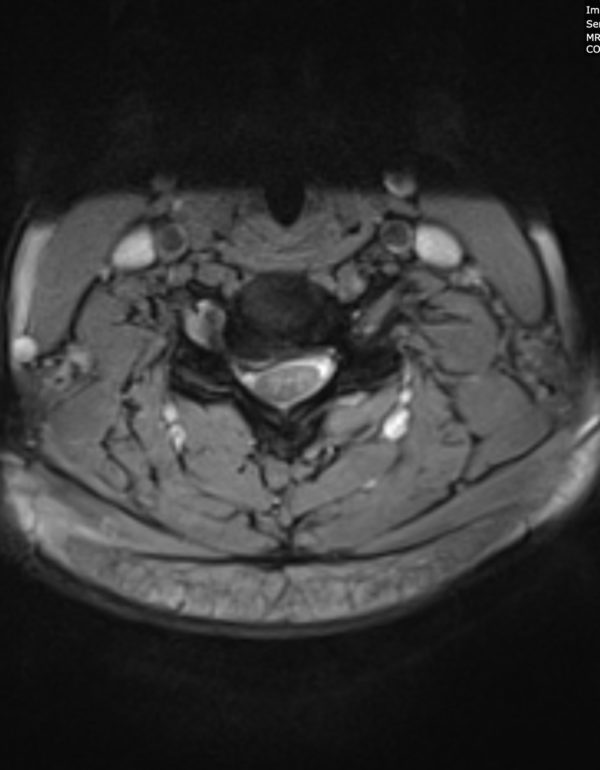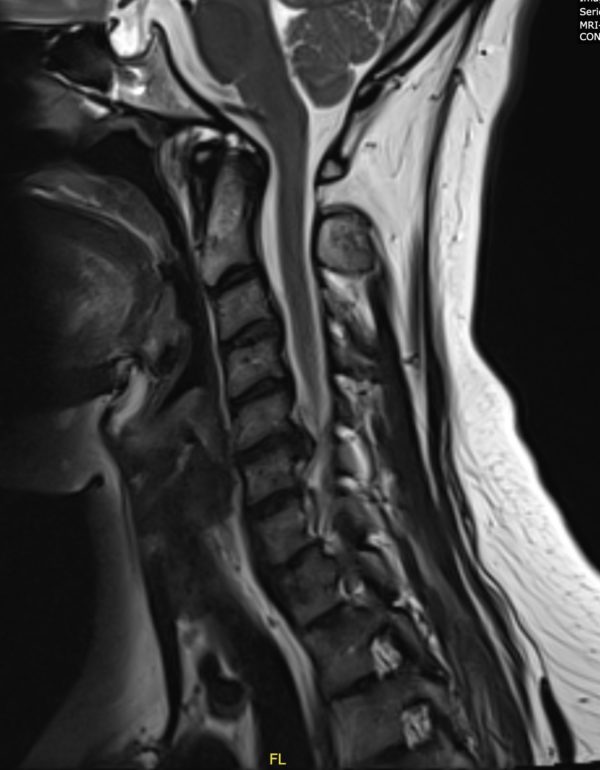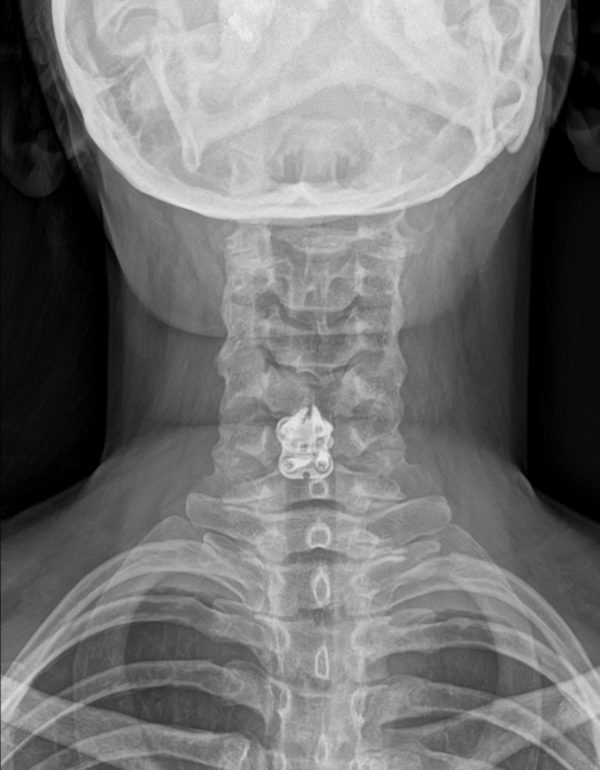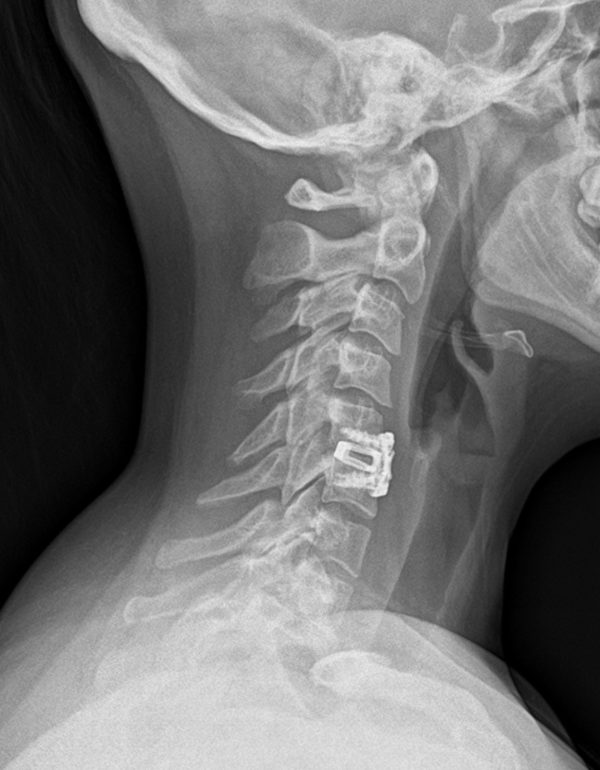The Patient
Kristen is a 35-year-old nurse and mom of two young children. For several years, she had debilitating pain in her neck that radiated down her arms, severe muscle spasms, numbness in her fingertips and a burning sensation across her shoulder.
In spite of her constant pain, Kristen continued working full time as a nurse. However, as her range of motion decreased and she found she was constantly dropping things, work became increasingly more difficult.
Her pain manifested itself in negative ways at home as well. She wasn’t able to play with her two children. Even her two-year-old knew of the situation and would say, “Mommy has a boo boo.” Kristen’s condition and limitations led to depression and she put on weight, exacerbating the pain.
After working with a pain management physician and trying a range of non-surgical options, including physical therapy, epidural injections and nerve medications without success, she was referred to Long Island spine surgeon Dr. Daniel Choi.
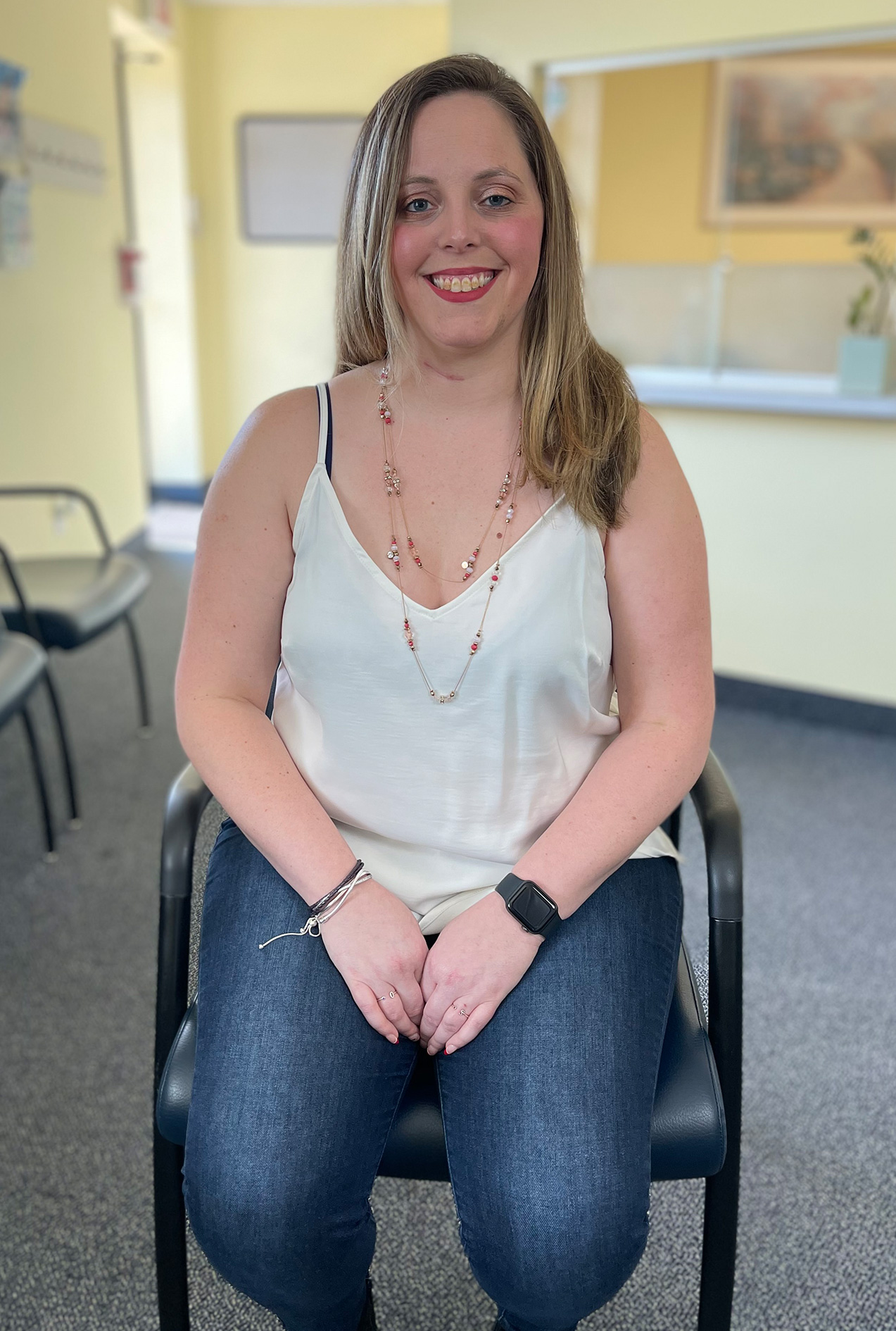
The Problem
The cervical spine, or neck, consists of seven vertebrae (bones) stacked on top of one another and separated by discs. The discs absorb shock and allow the neck to move in all directions. When injury or degeneration causes a problem with the discs, neck pain and stiffness are often the result. If a nerve root is impinged, patients may also experience pain that radiates down the arm (radiculopathy) and neurological symptoms similar to Kristen’s, including tingling, numbness and loss of coordination in the hand and arm.
At Kristen’s first visit with Dr. Choi, she described severe, debilitating axial neck pain and bilateral upper extremity radicular pain (nerve pain in both arms). She rated her pain a 7 out of 10 and was concerned that her symptoms were interfering with her job and her relationship with her children.
The Diagnosis
Kristen was initially evaluated by her pain management physician who ordered an MRI of the cervical spine. The MRI showed a right-sided paracentral disc herniation of C5-6, causing severe impingement on the right-side-exiting C6 nerve root. After exhausting non-operative treatments, she was referred to Dr. Choi for a surgical consult. After examining Kristen and reviewing her diagnostic records, Dr. Choi concurred with the diagnosis.
What Does That Mean?
In layperson’s terms, paracentral disc herniation of C5-6 means that the soft interior of a disc between two of Kristen’s cervical vertebrae pushed out of its exterior shell and into the spinal canal, resulting in neck pain and decreased mobility. The herniated disc was also putting pressure on the nerve root and causing the nerve pain, tingling and numbness Kristen was experiencing in her arms and hands.
The Solution
Because numerous epidural steroid injections to the cervical spine, medications and physical therapy were not effective in relieving Kristen’s symptoms, Dr. Choi recommended a minimally-invasive spine surgery called Anterior Cervical Discectomy and Fusion (ACDF).
Dr. Choi walked Kristen through his findings, explained exactly what the procedure would entail and answered all of her questions. She decided to proceed with surgery.
In November 2021, Dr. Choi performed ACDF C5-6 on Kristen at St. Francis Hospital. During the procedure, Dr. Choi made a small incision at the front of Kristen’s neck. He then used special instruments to remove the herniated disc. Dr. Choi placed a titanium spacer filled with bone graft into the disc space to restore the height of the disc space and the neural foramina where Kristen’s nerves exited from. Finally, he used metal plates and screws to secure the spacer. As new bone forms through the spacer, it stabilizes the neck.
Minimally invasive ACDF is different from posterior cervical fusion surgery. A very small incision is made in a natural skin fold so that scarring is minimized. Instead of cutting through the posterior spinal muscles of the cervical spine to stabilize the spine, ACDF minimizes trauma to the muscles by mainly being performed by moving tissues and muscles aside.
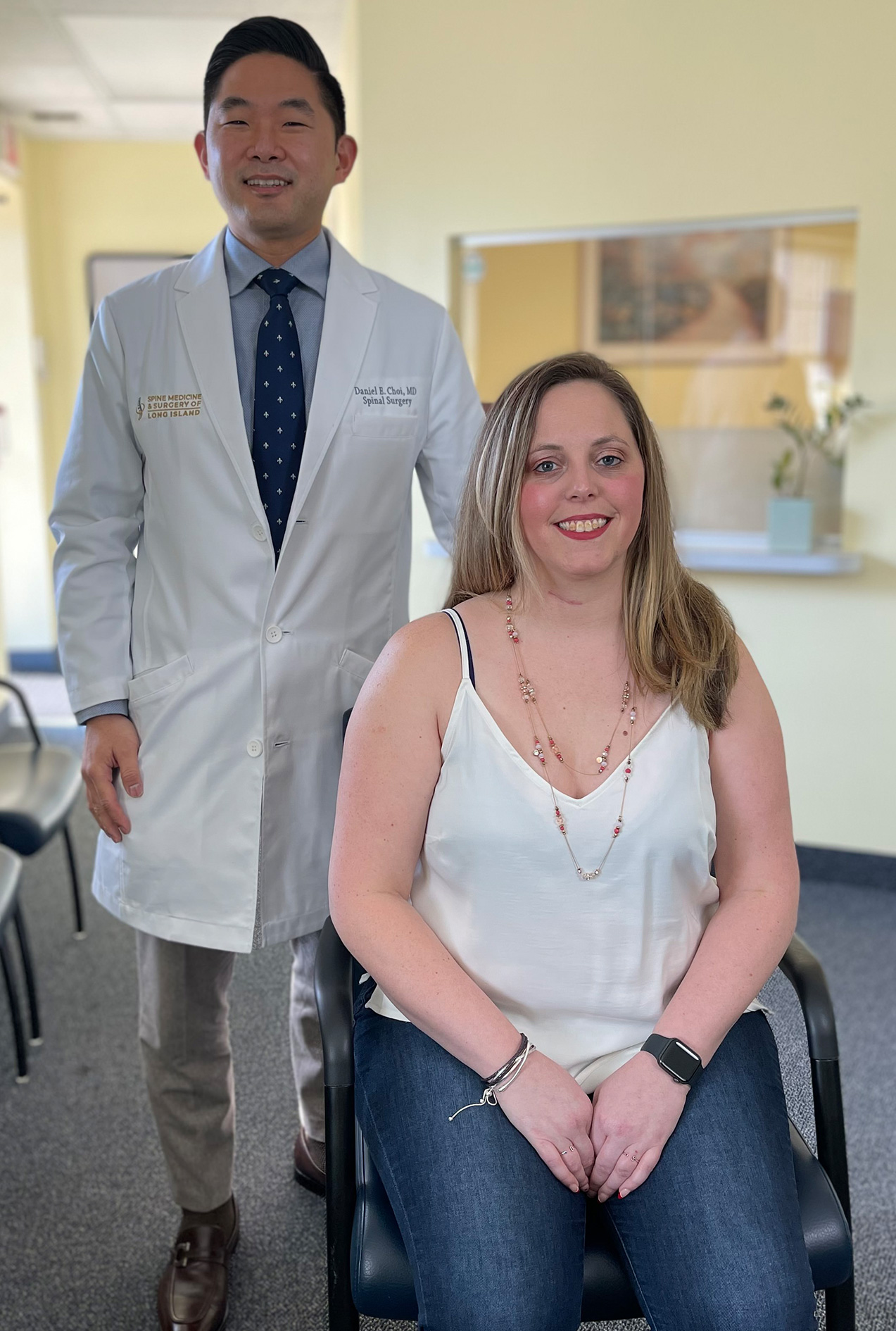
The Results
Kristen’s surgery went smoothly. Dr. Choi created more space in her spinal canal and eliminated the nerve compression by removing the herniated disc and stabilizing her cervical spine. Immediately upon waking up in the postoperative recovery unit, Kristen was able to feel her fingers and noticed instant relief of the nerve pain in her upper extremities.
Her symptoms continued to improve at each postoperative visit and all x-rays showed the implants were in their ideal positions. After her six-week follow up, Dr. Choi started Kristen on physical therapy to work on range of motion and strengthening her neck muscles.
At Kristen’s one-year follow up, she reported complete resolution of the radicular pain and neurological symptoms and no significant neck pain. She had also regained full range of motion in her neck.
The Future
Kristen calls the surgery “life changing.” Dr. Choi’s minimally invasive approach meant significantly less postoperative pain and downtime, allowing her to quickly resume many of her daily activities. Now that the pain, spasms, tingling and numbness are gone, she no longer wants to sleep all day and she is able to be much more active. Sitting, driving, walking, going to the park and playing with her children are pain-free experiences.
Surgery didn’t just impact Kristen either. It had a profound effect on her son, because Kristen’s mood is not negatively affected by her pain and she doesn’t have to tell him, “I’m sorry. I can’t do that today with you. I have to go lay down.” Her two-and-a-half-year-old daughter notices the difference too. When asked what she wanted to be when she grows up, the toddler said, “I want to be a doctor like Dr. Choi, because he helped mommy’s boo boo.”
Being able to have an active lifestyle again and spend quality time with her children has been an incredible gift to Kristen. She’s grateful she chose Dr. Choi and had the surgery. As she continues to reclaim her life, the future looks bright for Kristen and her family.



